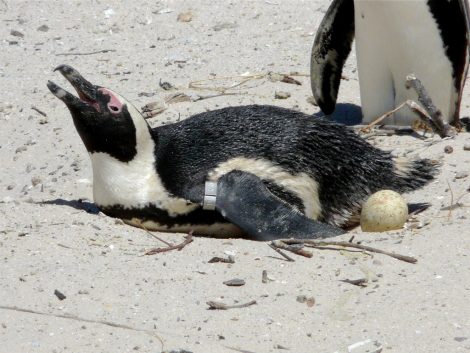Penguins are flightless seabirds. There are a total of 17 living species of penguins. As any other birds, penguins also lay eggs. Female King Penguins and Emperor Penguins lay around one egg at a time whereas Adelie and other crested penguins are said to lay two eggs in one time. Little penguins also called as fairy penguins and African penguins sometimes lay three eggs at a time.
Each species of penguins are unique in characters, appearance and behaviors. Penguins’ breeding season also depends on the species and the region where they live. The annual breeding season of all the penguin species will be from spring through summer.
Breeding cycle depends upon the size of the species. Larger penguins breed for long duration and smaller penguins like little penguins breed for the shorter cycle of around 50 days. Emperor penguins lay eggs during the frigid Antarctic winter. The temperature may be below -40 degree Celsius.
Emperor penguins travel for long distance to find the breeding sites because of the harsh winter. They take shelter under ice cliffs and protect their chicks until summer. Staying under ice cliffs protects the Emperor penguins’ chicks from the freezing wind.
Male penguins incubate the eggs until the female returns from hunting. There is a featherless pouch like a place where the eggs or chicks are kept comfortable within the warmth of male penguins. If there is not sufficient warmth from the parent, the egg tends to die in the freezing temperature.
The male penguin takes the egg carefully on its feet and balances to keep it safe for incubation. For the eggs to hatch it takes around 34 to 35 days. Crested penguins’ lay two eggs with the first one being smaller than the other second one. In most of the cases, the crested penguins’ first laid egg dies faster and the second one tends to survive in the cold temperature.
Crested penguins start swimming in the icy ocean when the first egg starts. They cannot contribute a lot of energy to build the egg while swimming which leads to a small egg. The second is larger because the crested penguins come to land from the ocean and dedicate it to make the egg grow.
The eggs are insulated with the thick shell to protect from the hard icy atmosphere. Emperor penguins lay eggs on open icy land whereas other penguins lay eggs on their nests or guanos. Female Emperor Penguins have to pass the eggs to the males immediately after laying, to avoid any misfortune due to the cold.
Males take the eggs carefully to their pouch and keep the eggs safely. Once the females return from hunting, the males move carefully from the egg to hand it over to the females. Later on, the male Emperor penguin feeds the family by going for hunting. Both the parents take care in raising their chicks until they are capable enough to survive the cold.
Conclusion:
Penguins copulate most often until the female lays her egg. Penguins become matured for breeding from three to eight years, which depends on the species. Copulation between penguins is harder because of their torpedo-shaped body.
Even though, the body shape doesn’t cooperate for their breeding season, the females sit still until the entire session to avoid the fall of the male penguins. The number of eggs laid by the penguins is meager because of their physique, habitat and natural behaviors.
References:
https://ypte.org.uk/factsheets/penguin-emperor/breeding
https://seaworld.org/en/animal-info/animal-infobooks/penguin/reproduction
https://news.nationalgeographic.com/2016/10/why-penguins-lay-two-eggs-science/

